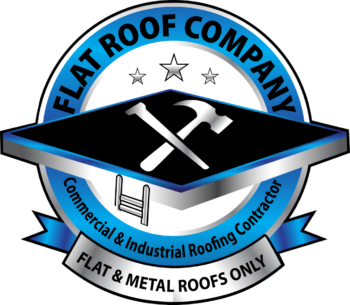1. Understand the Common Flat Roof Issues
Before diving into repair tips, it’s important to recognize the common problems affecting flat roofs in Baltimore:
- Ponding Water: Due to minimal slope, flat roofs can accumulate water, especially after heavy rains or snow melts common in Maryland.
- Membrane Damage: Flat roofs often use materials like EPDM, TPO, or modified bitumen. These membranes can crack, blister, or tear over time.
- Flashing Failures: Flashing around vents, HVAC units, and edges is vulnerable to wear, leading to water infiltration.
- Roof Cracks and Blisters: Caused by temperature fluctuations and moisture buildup, these can weaken the structure and allow water to seep in.
2. Schedule Regular Roof Inspections
One of the most effective ways to prevent costly flat roof repairs is by conducting regular inspections, ideally twice a year, in the spring and fall. Baltimore’s weather can be harsh on flat roofs, with freeze-thaw cycles, heavy rains, and snow accumulation accelerating wear and tear.
Inspections should focus on:
- Membrane integrity (tears, holes, or blistering)
- Flashing and seams
- Drainage systems (to prevent ponding)
- Signs of algae, mold, or rot
By catching small issues early, property owners can avoid larger, more expensive problems down the line.
3. Keep Your Roof Clean and Debris-Free
Leaves, branches, and dirt often accumulate on flat roofs, especially if your commercial property is near trees. This debris can clog drains and gutters, leading to standing water and leaks. In Baltimore’s rainy spring and storm-prone summers, clogged drains can cause serious problems quickly.
Make it a habit to:
- Remove debris after every storm
- Clear out gutters and downspouts regularly
- Check that rooftop equipment (like HVAC units) hasn’t caused any obstructions
A clean roof not only looks better but functions more efficiently and reduces the need for repairs.
4. Use the Right Materials for Repairs
Not all roofing materials are created equal. Baltimore’s fluctuating weather requires materials that can withstand both hot, humid summers and freezing winters.
When patching or repairing:
- Use compatible materials for your existing membrane (e.g., don’t use TPO patches on an EPDM roof)
- Apply weather-resistant coatings to extend roof life and improve energy efficiency
- Hire a professional roofing contractor familiar with flat roofing systems and local codes
Using the wrong materials can lead to failed patches, water infiltration, and warranty voids.
5. Address Ponding Water Immediately
Ponding water, water that remains on your flat roof 48 hours after rainfall, is a red flag. It stresses the roof structure, weakens materials, and accelerates deterioration.
Solutions include:
- Re-sloping the roof or installing tapered insulation
- Clearing or replacing clogged drains
- Adding extra drainage points
- Applying reflective or waterproof coatings
In Baltimore, where seasonal rain and snow are common, proper drainage is critical for flat roof health.
6. Act Quickly on Small Leaks
If you spot a ceiling stain, damp wall, or strange odor in your commercial building, it could be a sign of a roof leak. Delaying repairs, even for a seemingly minor issue, can lead to major water damage, mold growth, and structural weakening.
Prompt action includes:
- Calling a professional roofer to locate the source
- Temporarily sealing leaks with patches or sealants until full repairs can be made
- Investigating the insulation and sub-roofing for hidden damage
In commercial settings, downtime due to water damage can be costly. Prioritizing quick leak repair keeps your operations running smoothly.
7. Invest in Preventive Maintenance Plans
Many commercial roofing contractors in Baltimore offer preventive maintenance programs. These programs often include:
- Biannual inspections
- Minor repairs
- Debris removal
- Drainage checks
- Detailed maintenance reports
While these services come with a cost, they can significantly extend the lifespan of your flat roof and reduce emergency repair needs. Plus, regular maintenance may be required to keep your roofing warranty valid.
8. Work With Local, Experienced Roofing Professionals
Repairing flat roofs is not a DIY job, especially when it involves large commercial buildings. Choose a licensed and insured roofing contractor with experience in Baltimore’s building codes, weather patterns, and roofing materials.
A local expert will understand the unique demands of the area, such as heavy snow loads, high humidity, and severe summer storms. They’ll also be better equipped to recommend roofing systems or materials that offer long-term durability.
Final Thoughts
Flat roof repair in Baltimore commercial buildings is all about proactive maintenance, timely action, and expert help. By understanding common issues, keeping the roof clean, inspecting regularly, and working with trusted professionals, you can avoid costly disruptions and protect your building investment.
Whether you manage a retail store, office building, or warehouse in Baltimore, your flat roof is a critical part of the structure. Stay ahead of repairs and ensure your business operates smoothly year-round by treating flat roof maintenance as a priority.
